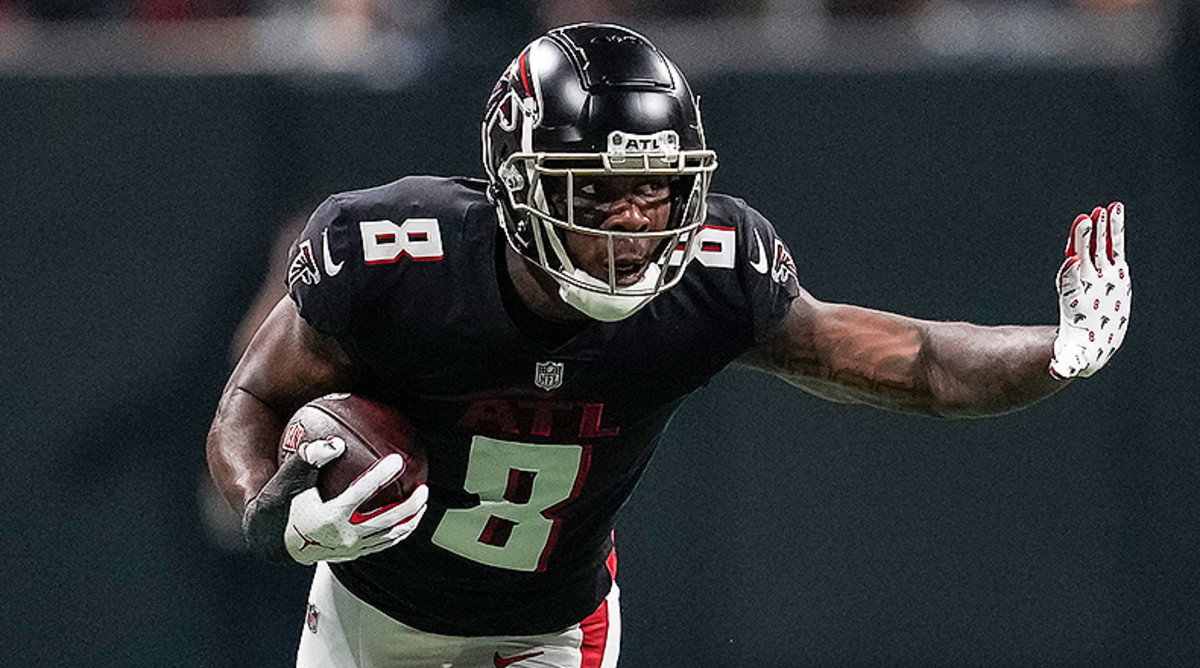
The zero running back draft strategy has been thrown around a lot lately in the last 2 years. Funny thing is that it has actually been around for many years now, it just did not have a fancy name. I personally gave up on draft running backs early at least 6 years ago. To be clear, the zero running back strategy draft does not literally mean you are drafting no running backs, it just means that you break from the old school theory that you draft 2 top running backs in the first 3 rounds. There are a number of reasons that occurred over a number of years as to why this shift in drafting philosophy has occurred. I am here to walk you through those reasons and offer some advice on making this strategy work for you.
When I first started playing fantasy football 25 years ago, back when we looked up stats in the newspaper on Monday morning, PPR was not that common. Most leagues had very simple scoring systems, mostly based on touchdowns and milestones like 100 yards rushing or receiving or 300 yards passing. I think the reason most of these leagues were set up this way is because it was a lot of work for a commissioner to keep track of scores, rosters, and transactions. So that’s when the fantasy football gods created the internet for us. Now our scores, rosters, and transactions are all tracked through nifty little programs. As a bonus, now that commissioners don’t have to do so much work, many leagues started expanding its scoring system. All of the sudden we were getting 1 point per reception, and 1 point for every ten yards. These changes made receivers more valuable, but the best receivers were barely breaking into the first round. While the opening up of scoring systems was the first event in the paradigm shift in drafting, it was just the beginning.
In the early 2000’s a lot of teams in the NFL started implementing a running back strategy called running back by committee, also known as RBBC. They went to this strategy because of the high injury rate of bell cow running backs. For those of you that don’t know what a bell cow is, it is a running back that takes the majority carries for a team. Typically they would see about 20+ carries per game, while the other backs on the team would be lucky to see five. The problem with a bell cow back is the injury risk involved with that back taking 20+ hard hits a game. Over the years more and more teams opted for the RBBC. In 2015 only 3 running backs averaged 18 or more carries and 2 of them played all 16 games. Basically, that tells me that almost every team is using at least 2 running back on a regular basis. With very few running backs getting the extra touches that a bell cow gets, it really levels the playing field between receivers and running backs. Despite the field being leveled, it still has not tipped in the favor or receivers just yet. We have one more adjustment to the league that will elevate receivers higher than most running backs.
One final evolution to the game of football has greatly contributed to the success of a zero running back strategy. The shift from a ground and pound style of offense to the common aerial assault we see every week in the NFL. Between west coast offense, hurry up offense, and spread formations, more and more teams are opting for spreading the ball out. Any way you label teams are throwing the ball more than ever in today’s NFL. For example, in 2004 only 7 quarterbacks threw the ball more than 500 times and the most attempts was 556. In 2015 15 quarterbacks had over 500 passing attempts with the highest being 662. In fact, 11 quarterbacks had more attempts than 2004’s high mark of 556. I have always viewed fantasy football as a numbers games. You want players that are going to have the most opportunities to score points for you. In the 90’s it was running backs getting 25+ carries and 5 receptions per game that gave you the best return on investment. Now running backs are getting 20 total touches and your top receivers are getting 8 – 13 targets a game. I know that number is still in favor of the running back, but consider a back getting 8 yards on 2 carries to a receiver catching 1 of 2 passes of 10 yards. The back scored .8 points the receiver gets 2. So while the back is still getting more touches, most of their touches result in about half a point while receivers get 1.5 – 2 point per touch. Thus finally making top receivers more valuable than most top running backs.

There are some things that you should keep in mind if you plan to use the zero running back draft strategy. First, understand your scoring system. PPR is obviously the best scoring system to implement this, but make sure you league does not have any special rules that help balance that out. Maybe the back gets a bonus every 5 carries or QB’s get 6 points for passing TD’s. It is critical you understand the scoring so you can determine what positions benefit the most and if it happens to be receivers than you can consider zero running back strategy. If you do go with the zero back method it is also important you pay close attention to the waiver wire. Look for opportunities to steal a back that is taking over a job or due to injury is being used more. Many times we don’t know which backs will play larger roles in the passing game until the season starts. I know both of these guys ended up getting hurt, but did anyone have Lance Dunbar or Dion Lewis on their radar during draft day? So always be on the lookout for waiver wire help. Finally the success in most draft strategies many times comes down to injuries. You may have drafted the best team on paper, but when 3 of your top 5 go down with injuries that is a lot of points to make up on the waiver wire. Remember, even the best-laid plans of mice and men often go awry or maybe it’s just Murphy’s law or bad karma, whichever one makes you feel better.
So there you have it, the internet, RBBC, and a shift in offensive philosophy. The perfect storm of events that lead us right into zero running back strategy. Will this guarantee fantasy football success of course not. But hopefully, I shed some light on this hip new strategy so you can better prepare for your draft.
Michael Kelley is a member of the Going For 2 team. You can check out his website Dynasty League Problems for more writings or follow him on Twitter @mikekelleydlp.
[wysija_form id=”1″]ATTN Dynasty Commissioners: Do you want to do something cool for your league? How about a 1-hour live show dedicated to YOUR league? Team-by-team breakdowns, rankings, and more. For details and to book a show, visit: GoingFor2.com/plp.





